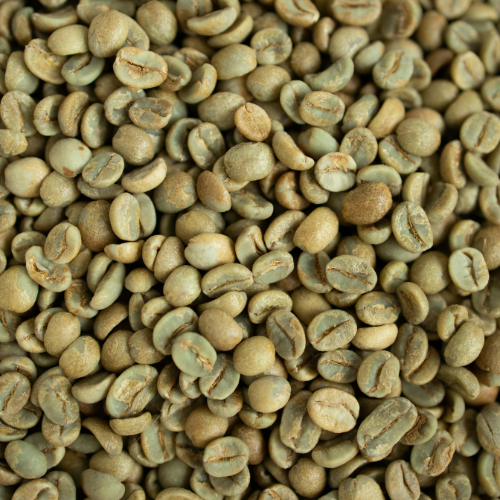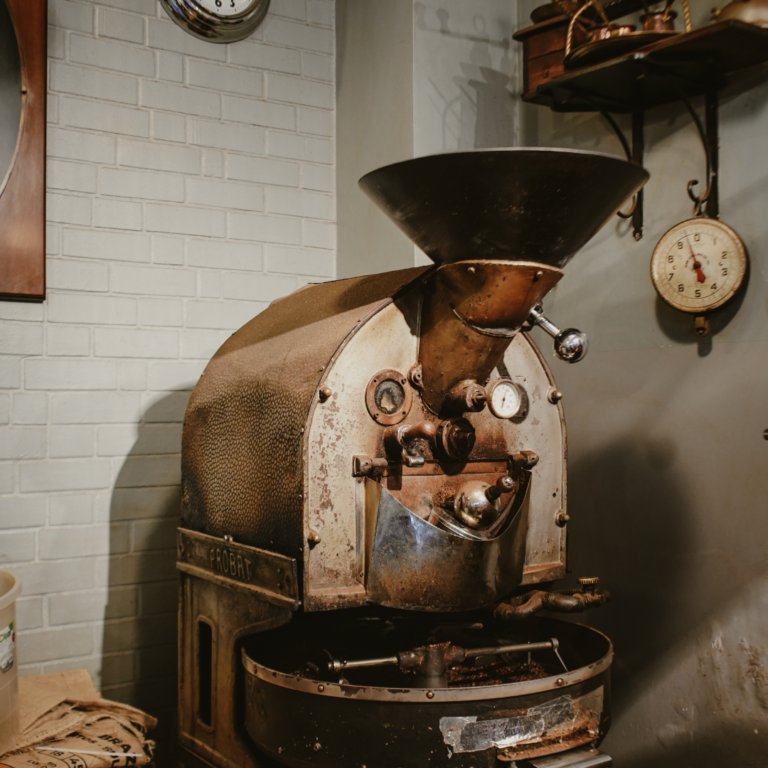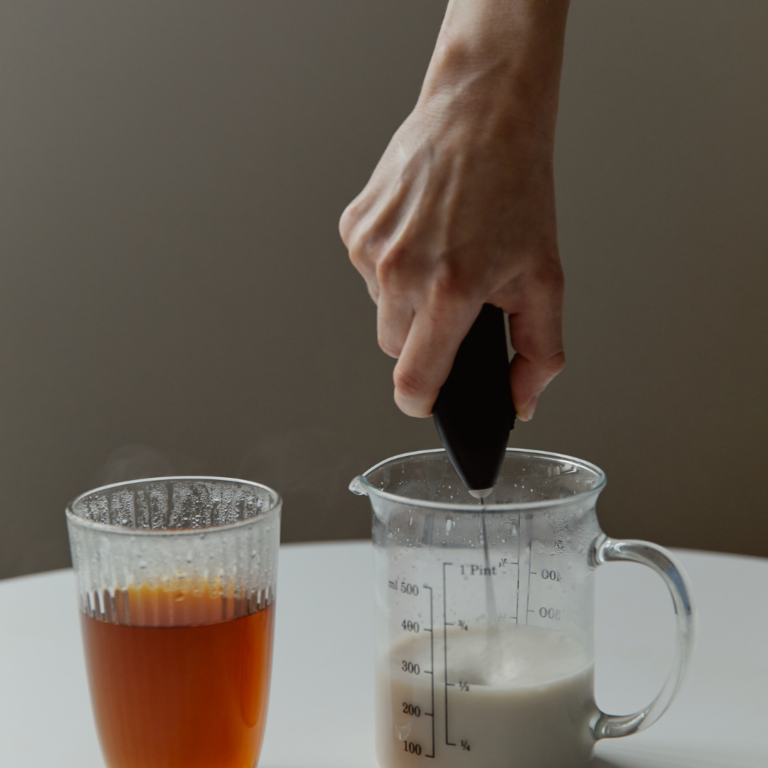For coffee lovers, selecting the right grinder can be as crucial as choosing the perfect coffee beans. Whether you’re a novice looking to upgrade from pre-ground coffee or a seasoned aficionado seeking the best tool for your brewing method, understanding the differences between manual and electric coffee grinders is essential. This guide will help you navigate the options and make an informed decision to enhance your coffee experience.
Understanding Coffee Grinders
Grinders play a pivotal role in the coffee-making process, affecting both taste and aroma. Let’s dive deeper into what these devices are and the different types available.
What is a Coffee Grinder?
A coffee grinder is an essential tool used to break down coffee beans into smaller particles, preparing them for brewing.
- Functionality: The primary function of a grinder is to achieve the desired grind size, which can range from coarse to fine. This size directly influences the extraction process, affecting the flavour and aroma of the coffee.
- Impact on Flavour: The grind size determines how quickly water passes through the coffee grounds, thereby affecting the extraction of flavours. A finer grind generally leads to a more intense flavour, while a coarser grind results in a lighter brew.
- Importance in Brewing: Whether you’re using a French press, an espresso machine, or a drip coffee maker, the right grind size is crucial. Each brewing method requires a specific grind consistency to produce the best-tasting coffee.
Types of Coffee Grinders
Coffee grinders can be broadly categorized into two types: manual and electric. Each type offers unique advantages and challenges, which are important to consider based on your coffee preferences and lifestyle.
Manual Grinders
- Design and Mechanism: Typically, manual grinders consist of a crank handle attached to a set of burrs that crush the beans. They are often compact and straightforward in design.
- User Engagement: These grinders require physical effort to operate, engaging users in the coffee-making process. This can be rewarding for those who enjoy the ritualistic aspect of brewing coffee.
- Ideal Users: Manual grinders are perfect for those who appreciate a hands-on approach to coffee brewing and do not mind a bit of manual labour.
Electric Grinders
- Automation and Convenience: Electric grinders use electricity to power a motor, automating the grinding process. This makes them highly convenient for those who prioritize speed and ease of use.
- Diverse Features: Many electric models offer various settings for grind size, allowing for customization based on different brewing methods. Some even include timers and programmable settings for added convenience.
- Best for Busy Lifestyles: These grinders are ideal for individuals with busy schedules who need to prepare coffee quickly and efficiently.
Key Differences
- Operation: Manual grinders require physical effort, while electric grinders operate at the push of a button.
- Cost: Manual grinders are generally more affordable, whereas electric grinders come with a higher price tag due to their advanced features and automation.
- Portability and Space: Manual grinders are compact and easy to transport, making them suitable for travel. Electric grinders, on the other hand, are bulkier and require a power source.
Manual Coffee Grinders

Manual coffee grinders are celebrated for their simplicity and affordability. Let’s explore what makes them unique and whether they might be the right choice for you.
What is a Manual Coffee Grinder?
A manual coffee grinder, often referred to as a hand grinder, requires physical effort to operate. It usually consists of a crank handle and burrs that crush the beans.
Components and Design
- Crank Handle: The handle is attached to the top of the grinder and is rotated manually to activate the grinding mechanism.
- Burrs: These are the abrasive surfaces that crush the coffee beans. High-quality manual grinders typically feature ceramic or stainless-steel burrs for durability and consistency.
- Compact Size: Most manual grinders are designed to be portable, with a small, lightweight body that makes them easy to carry and store.
Operation and Use
- Manual Effort: The grinding process involves rotating the handle, which can be a satisfying ritual for many coffee enthusiasts. It offers a tactile experience that connects users to their coffee-making process.
- Control: Users have full control over the speed and intensity of the grinding, allowing for a personalized experience.
- Maintenance: Manual grinders are generally easy to clean and maintain, requiring little more than regular disassembly and cleaning of the burrs.
Advantages of Manual Coffee Grinders
- Portability: Manual grinders are compact and lightweight, making them perfect for travel and outdoor adventures.
- Travel-Friendly: Their small size makes them easy to pack in a suitcase or backpack, ensuring you can enjoy freshly ground coffee wherever you go.
- Versatility: They can be used anywhere without the need for electricity, making them ideal for camping or road trips.
- Consistency: They often deliver a consistent grind size, especially in models with quality burrs.
- Precision: High-quality burrs ensure uniformity in grind size, which is crucial for brewing balanced and flavourful coffee.
- Adaptability: Many manual grinders allow users to adjust the grind size, offering versatility for different brewing methods.
- Affordability: Typically, manual grinders are less expensive than their electric counterparts, making them an excellent choice for beginners or budget-conscious consumers.
- Cost-Effective: Without the need for complex machinery, manual grinders are generally more affordable, providing excellent value for money.
- Entry-Level Option: They are an accessible choice for those new to grinding their own coffee and looking to explore the process without a significant investment.
- Silent Operation: Without the need for electricity, manual grinders are notably quieter than electric models.
- Noise-Free: The absence of a motor means that manual grinders operate quietly, making them suitable for early mornings or shared living spaces.
- Peaceful Experience: The quiet operation adds to the calming and meditative experience of preparing coffee manually.
Disadvantages of Manual Coffee Grinders
- Effort and Time: Grinding coffee manually can be time-consuming and requires physical exertion, especially for larger quantities.
- Labour-Intensive: The manual process can be tiring, particularly if you’re grinding for multiple cups or fine grind sizes like espresso.
- Time-Consuming: It takes longer to grind coffee manually, which may not be ideal for those in a rush.
- Capacity: Most manual grinders have a smaller capacity, which may not be ideal for brewing large amounts of coffee.
- Limited Output: They typically hold enough beans for one or two servings at a time, requiring multiple grinding sessions for larger batches.
- Not Suitable for Large Groups: If you’re brewing coffee for a crowd, a manual grinder might not be the most practical option.
- Physical Limitations: Not everyone may find the manual operation suitable, especially those with physical constraints or limited hand strength.
- Physical Strain: Repeatedly rotating the crank can lead to fatigue, particularly for those with arthritis or other hand conditions.
- Accessibility: While engaging, the manual process may not be feasible for everyone, limiting its accessibility.
Electric Coffee Grinders

Electric coffee grinders offer a modern approach to grinding, combining speed with precision. Let’s delve into the features and considerations associated with these appliances.
What is an Electric Coffee Grinder?
An electric coffee grinder uses electricity to power a motor, which rotates the burrs or blades to grind the coffee beans.
Components and Design
- Motor: The heart of the electric grinder, the motor powers the grinding mechanism, allowing for fast and efficient operation.
- Burrs or Blades: Depending on the model, electric grinders use either burrs or blades to crush the beans. Burr grinders are preferred for their consistency, while blade grinders are more affordable.
- Settings and Controls: Many electric models come with adjustable settings for grind size and timers for precise control over the grinding process.
Operation and Use
- Ease of Use: With the push of a button, electric grinders can quickly process coffee beans, making them incredibly user-friendly.
- Speed and Efficiency: They are capable of grinding large quantities of coffee beans in a short period, ideal for busy mornings or large households.
- Maintenance: While generally low-maintenance, electric grinders may require occasional cleaning and care to ensure longevity and optimal performance.
Advantages of Electric Coffee Grinders
- Ease of Use: Electric grinders offer convenience, effortlessly grinding coffee beans with the push of a button.
- User-Friendly: Their automated operation makes them accessible to anyone, regardless of experience level.
- Time-Saving: The ability to grind coffee quickly is a significant advantage for those with busy schedules.
- Speed: They can grind large quantities of coffee quickly, making them suitable for families or frequent coffee drinkers.
- High Capacity: Electric grinders can process more beans at once, catering to larger households or frequent coffee consumption.
- Efficiency: Their rapid operation minimizes the time spent preparing coffee, allowing for more time to enjoy it.
- Consistency: High-quality electric grinders provide consistent grind sizes, which are crucial for specific brewing methods like espresso.
- Precision Grinding: Advanced models offer precise control over grind size, ensuring the best possible extraction for your chosen brewing method.
- Versatility: With multiple settings, electric grinders can accommodate various brewing preferences, from espresso to French press.
Disadvantages of Electric Coffee Grinders
- Price: Electric grinders are generally more expensive, with prices ranging significantly based on features and quality.
- Investment: While more costly upfront, high-quality electric grinders are a long-term investment in your coffee experience.
- Varied Pricing: The wide range of prices reflects differences in brand, features, and build quality, allowing you to choose based on your budget and needs.
- Noise: The motorized operation can be loud, which might be a concern in quiet environments.
- Disruptive: The noise level of some electric grinders can be significant, potentially disturbing others in the household.
- Consideration for Timing: Using an electric grinder early in the morning or late at night may not be ideal in noise-sensitive situations.
- Portability: Being reliant on electricity, they are less portable and not suitable for travel without access to power.
- Stationary Use: Electric grinders are best suited for home use, where a power source is readily available.
- Space Requirements: They typically require a dedicated space in the kitchen, which might not be feasible for those with limited counter space.
Burr Grinders vs. Blade Grinders
When it comes to choosing between burr and blade grinders, understanding their differences is essential for selecting the right tool for your coffee-making needs.
Burr Grinders
Burr grinders, found in both manual and electric models, use two revolving abrasive surfaces to grind the beans. They are highly regarded for producing a uniform grind size, which is essential for making espresso and other precise brewing methods.
How Burr Grinders Work
- Revolving Burrs: The beans are crushed between two burrs, which can be adjusted to achieve the desired grind size.
- Uniformity: The design ensures a consistent grind size, which is crucial for even extraction and flavour development.
- Adjustability: Many burr grinders offer a range of settings, allowing for customization based on your preferred brewing method.
Benefits of Burr Grinders
- Consistency: The even grind size results in balanced coffee flavours and optimal extraction.
- Versatility: Suitable for all brewing methods, from espresso to French press.
- Quality: Generally considered superior to blade grinders, burr grinders are favoured by coffee aficionados for their precision.
Blade Grinders
Blade grinders use a spinning blade to chop the beans, resulting in an uneven grind size. They are generally less expensive but may not achieve the consistency required for high-quality coffee.
How Blade Grinders Work
- Spinning Blade: The blade rotates at high speed, chopping the beans into smaller pieces.
- Inconsistency: The lack of control over grind size can lead to uneven extraction and less predictable flavour profiles.
- Cost-Effective: Blade grinders are typically more affordable, making them an entry-level option for casual coffee drinkers.
Drawbacks of Blade Grinders
- Inconsistent Grind: The uneven particle size can result in over-extraction or under-extraction, affecting the taste.
- Limited Control: Blade grinders offer minimal control over grind size, limiting their versatility for different brewing methods.
- Heat Generation: The high-speed blade can generate heat, potentially altering the flavour of the coffee.
Choosing the Right Grinder for Your Needs
Selecting the right coffee grinder involves considering various factors, including your brewing method, budget, and lifestyle. Here’s how to make an informed choice.
Considerations for Selection
- Brewing Method: The brewing method you prefer can influence your choice. For example, espresso requires a fine, consistent grind, making burr grinders preferable.
- Espresso: A burr grinder is essential for achieving the fine, uniform grind needed for espresso.
- French Press: A coarser grind is required, which can be achieved with either manual or electric grinders.
- Budget: Determine how much you are willing to spend. Manual grinders offer a budget-friendly entry point, while electric burr grinders are an investment for serious coffee enthusiasts.
- Affordability: Consider your budget and prioritize features that align with your needs and preferences.
- Investment Value: High-quality grinders can enhance your coffee experience, making them worth the investment for passionate coffee lovers.
- Frequency of Use: Consider how often you’ll use the grinder. Frequent users may appreciate the speed and convenience of an electric model.
- Daily Use: Electric grinders are ideal for daily use, offering efficiency and convenience.
- Occasional Use: Manual grinders may suffice for those who brew coffee less frequently.
- Space and Portability: Evaluate the space you have in your kitchen and your need for portability.
- Kitchen Space: Ensure you have enough counter space for an electric grinder, or opt for a compact manual model if space is limited.
- Travel Needs: If portability is a priority, a manual grinder is the best option for on-the-go brewing.
Recommendations
- For Espresso Lovers: Consider investing in a high-quality electric burr grinder to achieve the fine grind required for espresso.
- Precision and Consistency: A good electric burr grinder ensures the perfect extraction for rich and flavourful espresso shots.
- Durability: Look for models with robust construction and reliable performance.
- For French Press or Cold Brew: A manual grinder can suffice, offering the coarse grind needed for these methods.
- Cost-Effective Solution: Manual grinders provide an affordable option for those who enjoy these brewing styles.
- Control and Engagement: The manual process allows for a hands-on approach and customization.
- For Travel Enthusiasts: A compact manual grinder is ideal for brewing coffee on the go.
- Lightweight and Portable: Easy to carry, ensuring you can enjoy freshly ground coffee wherever you are.
- Versatile Use: Suitable for various brewing methods, making it a versatile travel companion
Conclusion
Choosing between a manual and an electric coffee grinder depends on your lifestyle, brewing preference, and budget. While manual grinders offer affordability and portability, electric grinders provide speed and convenience. Ultimately, the best coffee grinder is one that aligns with your specific needs and enhances your coffee brewing experience.
By understanding the nuances of manual and electric coffee grinders, you can make an informed decision that will elevate your daily coffee ritual. Happy grinding!








